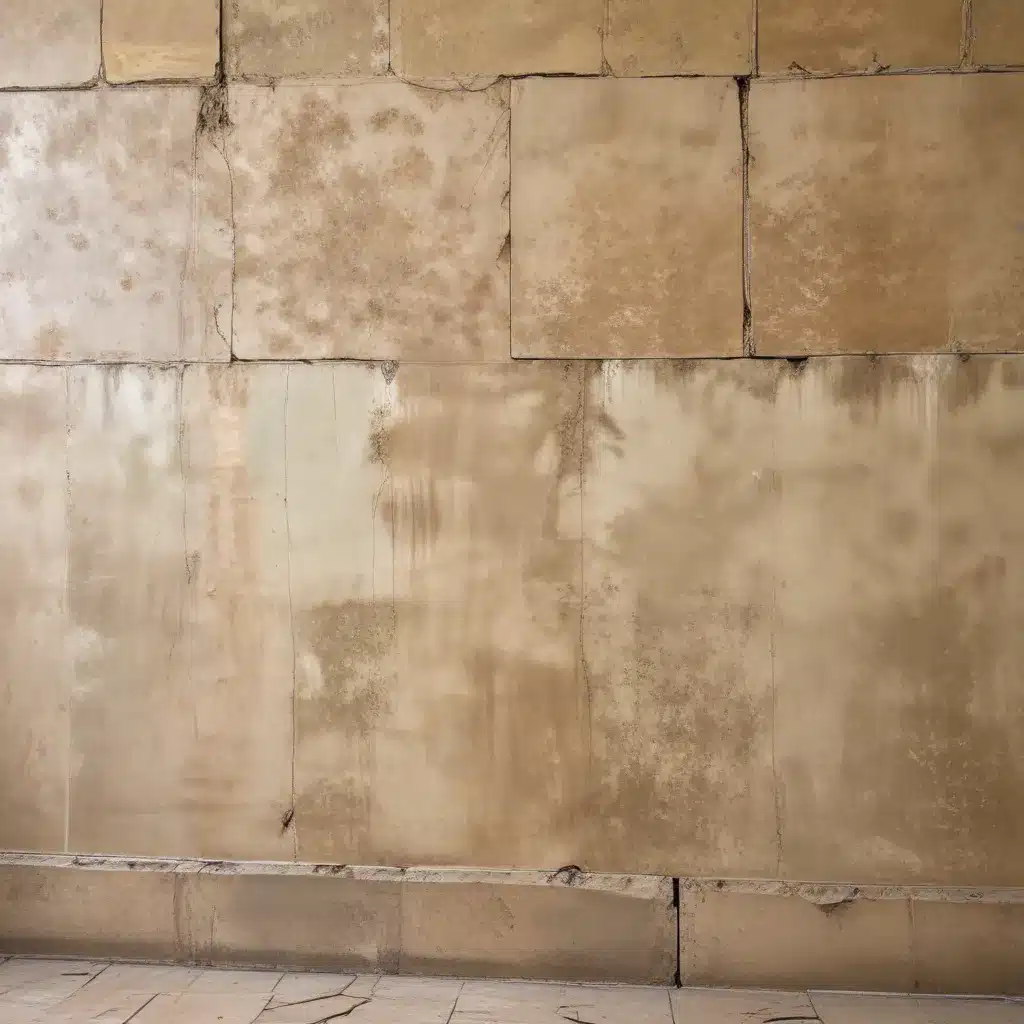
The Evolving Landscape of Damp Proofing
As an experienced damp proofing specialist, I’ve seen firsthand the transformative impact that sustainable practices can have on the built environment. In an era where energy efficiency and environmental preservation are at the forefront of our collective consciousness, the role of damp proofing has become increasingly crucial.
Gone are the days when damp proofing was solely focused on preventing moisture intrusion. Today, it has evolved into a multifaceted discipline, seamlessly integrating with broader sustainability initiatives. By embracing innovative technologies and employing best practices, we as damp proofing professionals can not only safeguard our buildings but also contribute to a more energy-efficient and environmentally-conscious future.
The Importance of Moisture Control
Damp proofing is the cornerstone of any comprehensive moisture management strategy. Moisture infiltration can have far-reaching consequences, from structural deterioration and compromised indoor air quality to increased energy consumption and reduced thermal efficiency.
Consider this: a building with poor damp proofing can experience significant heat loss, leading to higher heating and cooling costs for the occupants. Conversely, effective damp proofing can enhance the overall thermal performance of a structure, reducing the energy demands required for maintaining a comfortable indoor environment.
Sustainable Damp Proofing Techniques
At the heart of sustainable damp proofing lies a deep understanding of the latest materials, methods, and technologies. By carefully selecting the right solutions for each project, we can minimize the environmental impact while maximizing the long-term benefits.
One such innovative approach is the use of breathable damp proofing membranes. These advanced materials allow for the natural diffusion of water vapour, preventing the buildup of moisture within the building fabric. This not only safeguards the structural integrity but also promotes better indoor air quality, as the risk of mold and mildew is significantly reduced.
Another game-changer in the world of damp proofing is the emergence of hydrophobic coatings. These specialized treatments create a water-repellent barrier on surfaces, effectively blocking the ingress of moisture while allowing the free passage of water vapour. This delicate balance ensures that the building can “breathe,” reducing the likelihood of trapped moisture and the resulting damp-related issues.
Integrating Damp Proofing with Energy Efficiency
The synergy between damp proofing and energy efficiency is undeniable. By addressing moisture-related challenges, we can unlock a host of energy-saving benefits. For example, properly sealed and insulated buildings experience reduced heat loss, leading to lower heating and cooling demands. This, in turn, translates to decreased fossil fuel consumption and a smaller carbon footprint.
Moreover, the integration of damp proofing with renewable energy systems can further enhance the overall sustainability of a building. Solar panels, for instance, can be more efficiently installed and maintained on structures that have been effectively damp-proofed, ensuring optimal performance and longevity.
Safeguarding the Environment
Damp proofing professionals have a crucial role to play in preserving the natural environment. By implementing sustainable practices, we can mitigate the environmental impact of the construction industry, which is a significant contributor to greenhouse gas emissions and resource depletion.
One such example is the use of eco-friendly damp proofing materials, such as those derived from natural or recycled sources. These products not only reduce waste but also minimize the reliance on energy-intensive manufacturing processes, ultimately lowering the carbon footprint associated with damp proofing projects.
Embracing Emerging Technologies
The damp proofing industry is constantly evolving, with new technologies and innovations emerging to address the ever-changing demands of the built environment. From advanced moisture detection systems to automated humidity control mechanisms, these cutting-edge solutions are revolutionizing the way we approach moisture management.
Take, for instance, the integration of smart sensors into damp proofing systems. These intelligent devices can continuously monitor moisture levels, providing real-time data that allows for proactive intervention and preventive maintenance. This not only enhances the long-term performance of the damp proofing measures but also contributes to the overall energy efficiency of the building.
Promoting Damp Proofing Awareness
As damp proofing specialists, we have a responsibility to educate and empower both homeowners and building professionals. By raising awareness about the importance of sustainable damp proofing, we can inspire a broader shift towards more environmentally-conscious construction and renovation practices.
Through informative workshops, industry events, and targeted outreach campaigns, we can share our expertise and guide our colleagues and clients towards a deeper understanding of the critical role that damp proofing plays in achieving energy efficiency and environmental sustainability.
Embracing a Sustainable Future
The future of damp proofing is inextricably linked to the broader sustainability movement. By continuously innovating, adapting, and advocating for best practices, we can position ourselves as leaders in the quest for a more energy-efficient and environmentally-responsible built environment.
At Addamp Proofing, we are committed to this journey, driven by a passion for preserving the integrity of our buildings while safeguarding the health of our planet. Through our expertise, dedication, and unwavering commitment to sustainable solutions, we are confident that we can make a meaningful contribution to a more resilient and eco-friendly future.
Conclusion
As a damp proofing specialist, I have witnessed the remarkable transformations that can occur when sustainable practices are embraced. By integrating moisture control with energy efficiency and environmental preservation, we can unlock a world of possibilities – one where our buildings not only stand strong but also contribute to a cleaner, more sustainable tomorrow.
The time is now to embrace this holistic approach to damp proofing. By harnessing the power of innovative technologies, promoting awareness, and fostering a culture of sustainability, we can pave the way for a built environment that is not only resilient but also in harmony with the natural world. Join us on this journey towards a greener, more energy-efficient future – one damp proofing solution at a time.

